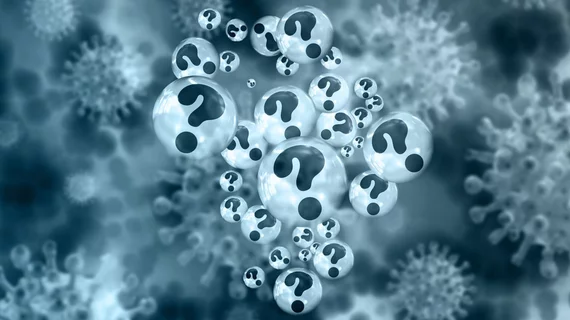Consumers struggle to understand quarantine guidance following at-home COVID test results
People often misunderstand how to interpret and act on the results of at-home COVID tests, underscoring a need for clearer instructions and communication from healthcare oversight groups.
More than 360 Americans were presented with hypothetical self-test results and various instructions (or none) for how to handle their COVID status. Individuals often failed to self-quarantine or isolated unnecessarily because they didn’t fully comprehend the implications of their results, according to survey findings published Jan. 31 in JAMA Internal Medicine.
People were particularly confused with how to handle negative test results in high-risk situations (symptoms and close contact). In fact, 36% of patients in this group said they wouldn’t follow quarantine guidance, even when provided federally approved instructions.
And with the Centers for Disease Control and Prevention releasing controversial recommendations loosening isolation requirements, the researchers believe clear communication must become a top priority.
“I think our results show how fundamentally important it is to design and pilot-test instructions to ensure that they can be understood by as many users as possible—to increase the benefits and reduce the harms from at-home self-test kits,” lead author Steven Woloshin, MD, MS, co-director of the Center for Medicine and Media at the Dartmouth Institute, said in a statement.
The U.S. Food and Drug Administration has authorized 11 rapid at-home testing kits in an effort to push widespread testing. Insurance companies and group health plans are also required to cover the costs of eight over-the-counter tests per month. But how people are using these tests and acting on the results remains unclear.
For the study, participants were presented with test results and either FDA instructions, guidance developed and tested by the researchers or no instructions at all.
Each person interpreted their results from one of four scenarios, three of which were considered high risk and one low risk: having typical COVID-19 symptoms and recent close contact with a recently infected person; no COVID-19 symptoms and recent close contact; COVID-19 symptoms and no close contact; and no symptoms and no recent contact.
Given a positive result, most participants said they would follow the CDC’s isolation suggestions, regardless of which instructions they received.
In high-risk scenarios with negative results, meanwhile, 21% of people with no instructions and 4% given guidance developed by the study authors said they wouldn’t appropriately quarantine. In lower-risk situations, 31% with FDA instructions and 22% with new directions chose to quarantine unnecessarily. In the control group, 10% said the same.
The study authors believe the onus to clearly outline proper protocol should fall on healthcare professionals, rather than consumers.
"Medical experts often exaggerate how well they communicate with non-experts,” said Baruch Fischhoff, PhD, with the Departments of Engineering & Public Policy at Carnegie Mellon University. “Better communication is not expensive. However, it does require behavioral expertise and the humility to test communications before disseminating them.”
Read the entire study here.

